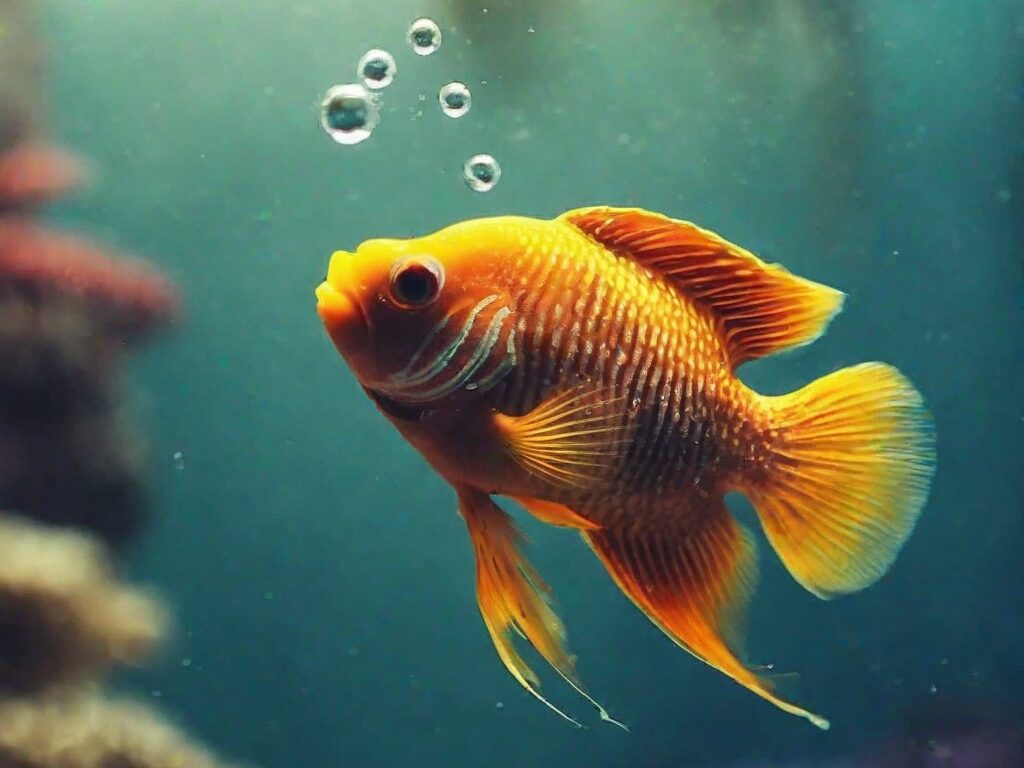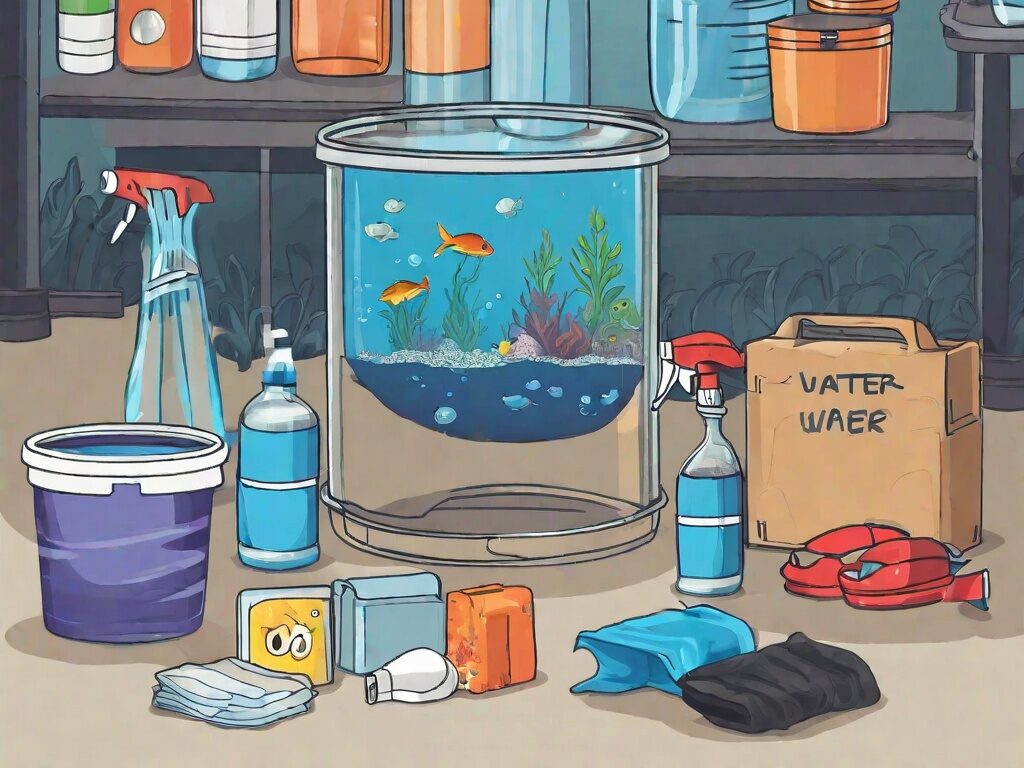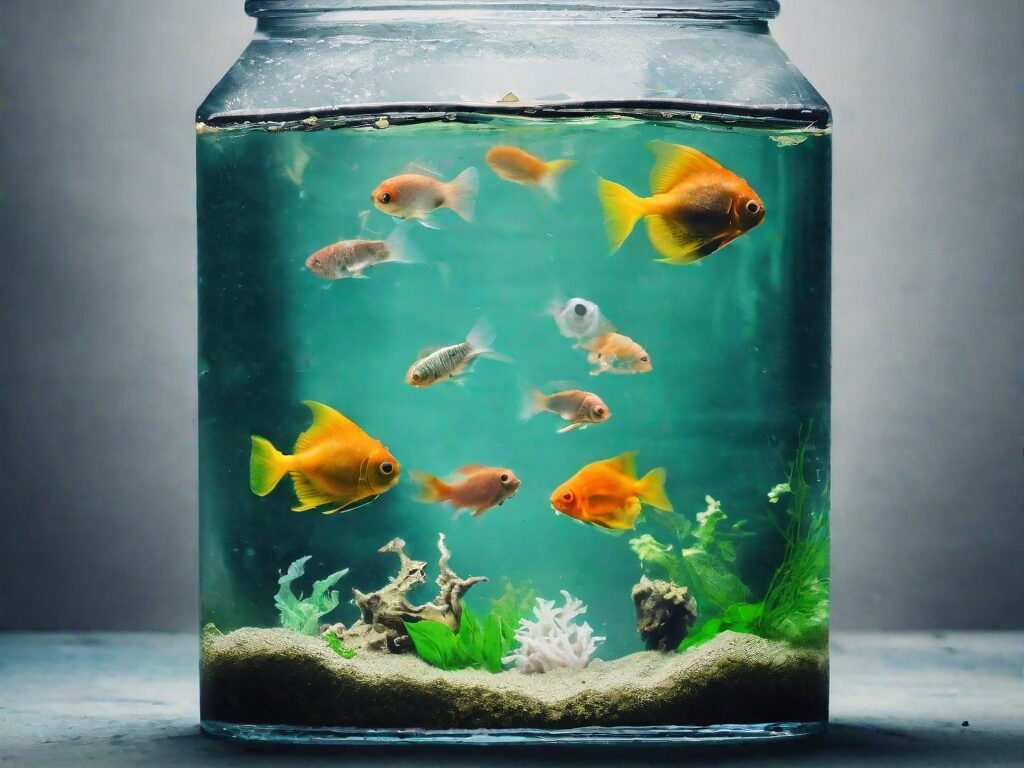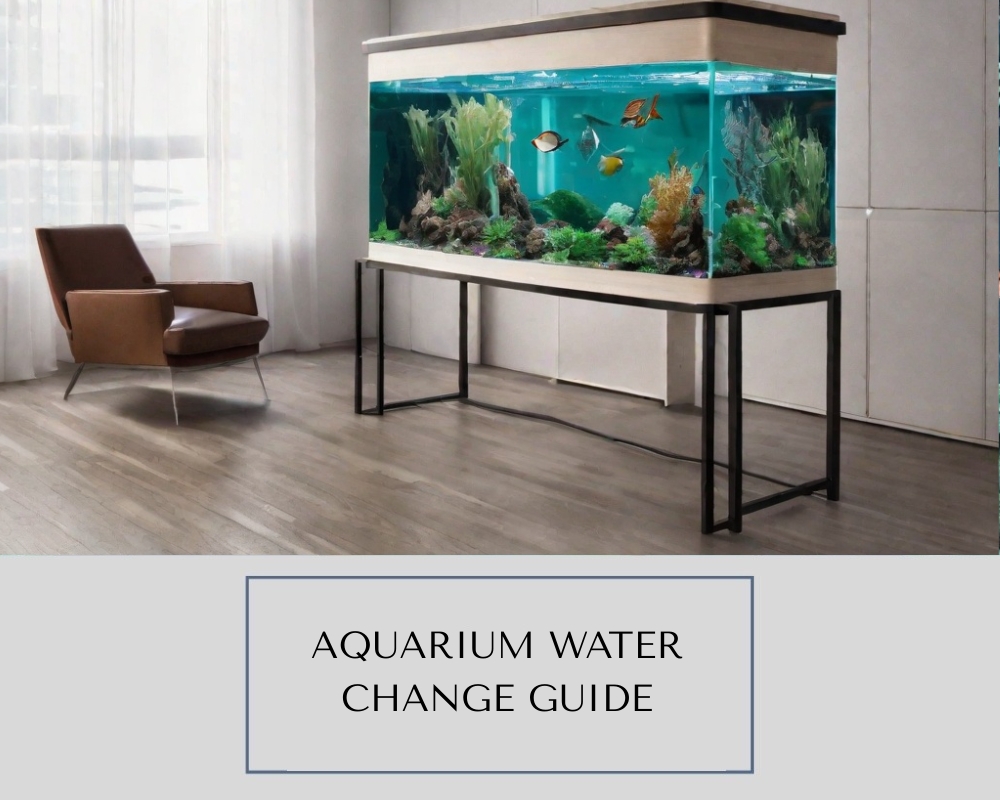One of the coolest things to have at home is a dazzling fish tank. It’s like having a tiny snippet of the ocean or a river right in your living room, filled with swimming fish and floating plants. But to keep the fish tank glowing and the fish swimming happily, it’s important to keep the tank clean. Imagine never cleaning your room for even a week, how would that make you feel? The fish tank is a room for your fish, and just like you’d want your room to be clean, the fish want their tank to be clean too. This means not just cleaning the corners but also changing the water regularly.
Why Changing Aquarium Water Is Important
Picture a flowing river or a vast ocean. They’re so big that when fish in them create waste (yes, fish poo), the waste gets diluted. But in a fish tank, this waste turns into dangerous stuff for your fishy friends. This waste turns into a chemical called ammonia, which is harmful to fish. But don’t worry, every healthy fish tank has good bacteria that turn ammonia into something called nitrate, which isn’t as dangerous for the fish. This transformation is similar to a recycling process, where used or waste materials are transformed into new products. Just like recycling helps our environment by reducing trash, the good bacteria in our aquarium help keep the water clean by transforming harmful waste into less harmful substances.
But even nitrates can hurt your fish if they pile up too much. So to make sure this doesn’t happen, you need to change the water in your tank regularly.

Gathering Supplies and Preparing for the Water Change
Before you start, you need some tools to help change the water in your tank. Here’s a list and why you need them:
- Siphon or gravel vacuum: This tool helps suck out the old water from the tank. They could actually be quite fun to use!
- Bucket: You need this to store the old water that you’ll be removing from the tank.
- Water conditioner: Tap water can have chlorine or heavy metals, which can hurt the fish. A conditioner makes tap water safe for fish.
- Aquarium water testing kits: These are super cool kits that you can use to make sure your water is safe for the fish.
It’s important to remember that you don’t want to add just any type of water to your tank. Tap water, when not treated, can actually be harmful to your fish. So before adding water to your tank, always treat it with a water conditioner.

The Step-by-Step Water Change Process
So you’ve got your tools and your treated water. Now it’s time to roll up your sleeves and dive in! Not literally, of course!
- Take your siphon, put one side into your tank and the other into the bucket. Use it to remove about a quarter to half of the water.
- While you remove the water, don’t forget to clean the gravel at the bottom of the tank. It can hide a lot of waste. But remember, be gentle. You don’t want to scare your fish or damage your plants.
- Once you’ve removed the water, it’s time to add the new water. But make sure the new water is about the same temperature as the water in the tank. A huge change in temperature can shock the fish.
- To make the water safe for the fish, you’ve got to treat it with the water conditioner. Always remember that clean, safe water is key to happy, healthy fish.

Testing and Monitoring Water Parameters
Once you’ve changed the water, there are other steps to complete. You see, just like an artist tests their colors or a cook tastes their food while they’re cooking, you need to test your aquarium water.
The water in your aquarium has much more than what we see. Invisible things such as pH levels and the presence of certain chemicals affect the fish in the tank. So, it’s time to step into the shoes of a scientist and test the water.
Using an aquarium testing kit makes this task easier. These kits are like mini laboratories – they come with strips that change color when they react with the chemicals in the water. By matching these colors with a chart that comes with the kit, you can figure out the levels of different substances. Pretty neat, isn’t it?
Having ideal pH levels keeps the water from being too acidic or alkaline, giving your fish an environment as close to their natural habitat as possible. Similarly, testing ammonia, nitrites, and nitrates helps ensure the water isn’t harmful to your fish.
Additional Tips and Considerations
Now, coming to the final tips. Consider changing the water like moving furniture in a room. If things are moved too quickly or everything changes at once, it can be startling. Fish react similarly, so remember to go slow and steady while changing water.
Avoid changing all the water in the tank at once. Removing a smaller portion of water multiple times is better than a large change all at once. This ensures that the fish tank environment remains as stable as possible, keeping your finned friends happy.
Conclusion
Water changing in a fish tank might seem a little complicated at first, just like a new video game might seem confusing. But as you play more and understand the game rules, it gets easier and even fun. In the same way, as you continue changing water and caring for your aquarium, you’ll start finding it less of a task and more of an enjoyable routine.
In the end, not only do you get healthy and happy fish, but you also get to be the proud caretaker of a tiny piece of the natural world right in your own home. So happy fishkeeping, and remember, your little fish friends are relying on you to keep their homes clean and healthy!
Frequently Asked Questions (FAQs)
How often should I change the water in my aquarium?
The frequency of water changes depends on several factors, including the size of your aquarium, the number of fish, and the type of fish you have. As a general rule of thumb, you should change 25-50% of the water in your aquarium every 2-4 weeks. However, some aquariums may require more or less frequent changes.
How much water should I change at once?
It is best to avoid changing more than 50% of the water in your aquarium at a time. This is because removing too much water can shock your fish and disrupt the beneficial bacteria in your filter.
What is the best way to remove water from my aquarium?
There are a few different ways to remove water from your aquarium. You can use a siphon, a bucket, or a gravel vacuum. A siphon is the most common method, as it allows you to remove water and debris from the bottom of the aquarium without disturbing the gravel.
Do I need to use a water conditioner?
Yes, you should always use a water conditioner when adding new water to your aquarium. This will remove harmful chlorine and chloramines from the water, which can be toxic to fish.
What is the best temperature for aquarium water?
The ideal temperature for aquarium water depends on the specific fish species you have. However, most freshwater fish thrive in water temperatures between 72-82°F (22-28°C).
What should I do if my fish seem stressed after a water change?
It is normal for fish to be a little stressed after a water change. This is because the sudden change in water temperature and chemistry can be shocking. However, if your fish are very stressed, you can try to calm them down by turning off the lights and adding a hiding place to the aquarium.
How can I prevent algae from growing in my aquarium?
There are a few things you can do to prevent algae from growing in your aquarium. These include:
Performing regular water changes
Keeping your aquarium lights on for no more than 12 hours per day
Cleaning your aquarium filter regularly
Planting live plants in your aquarium



